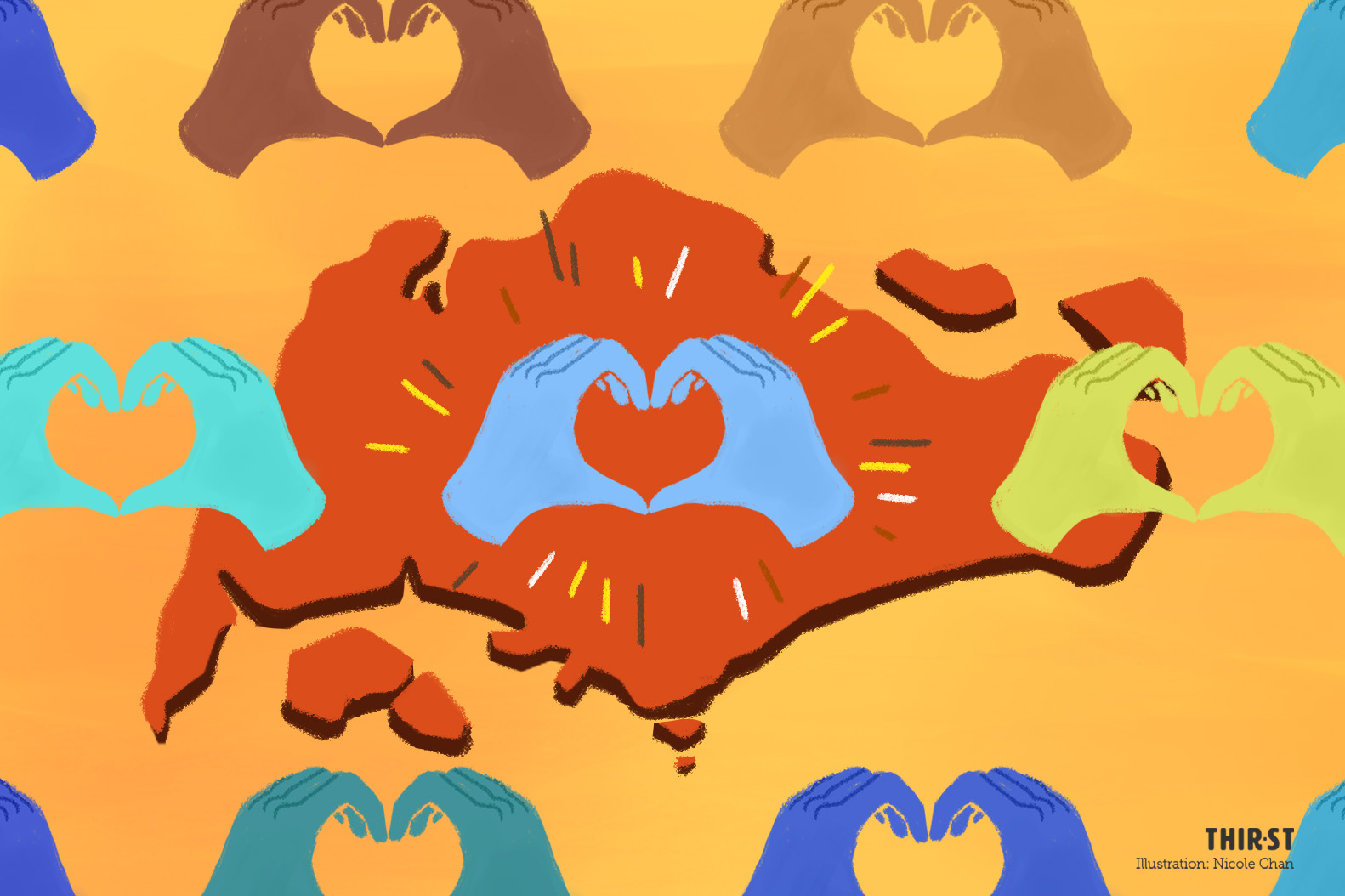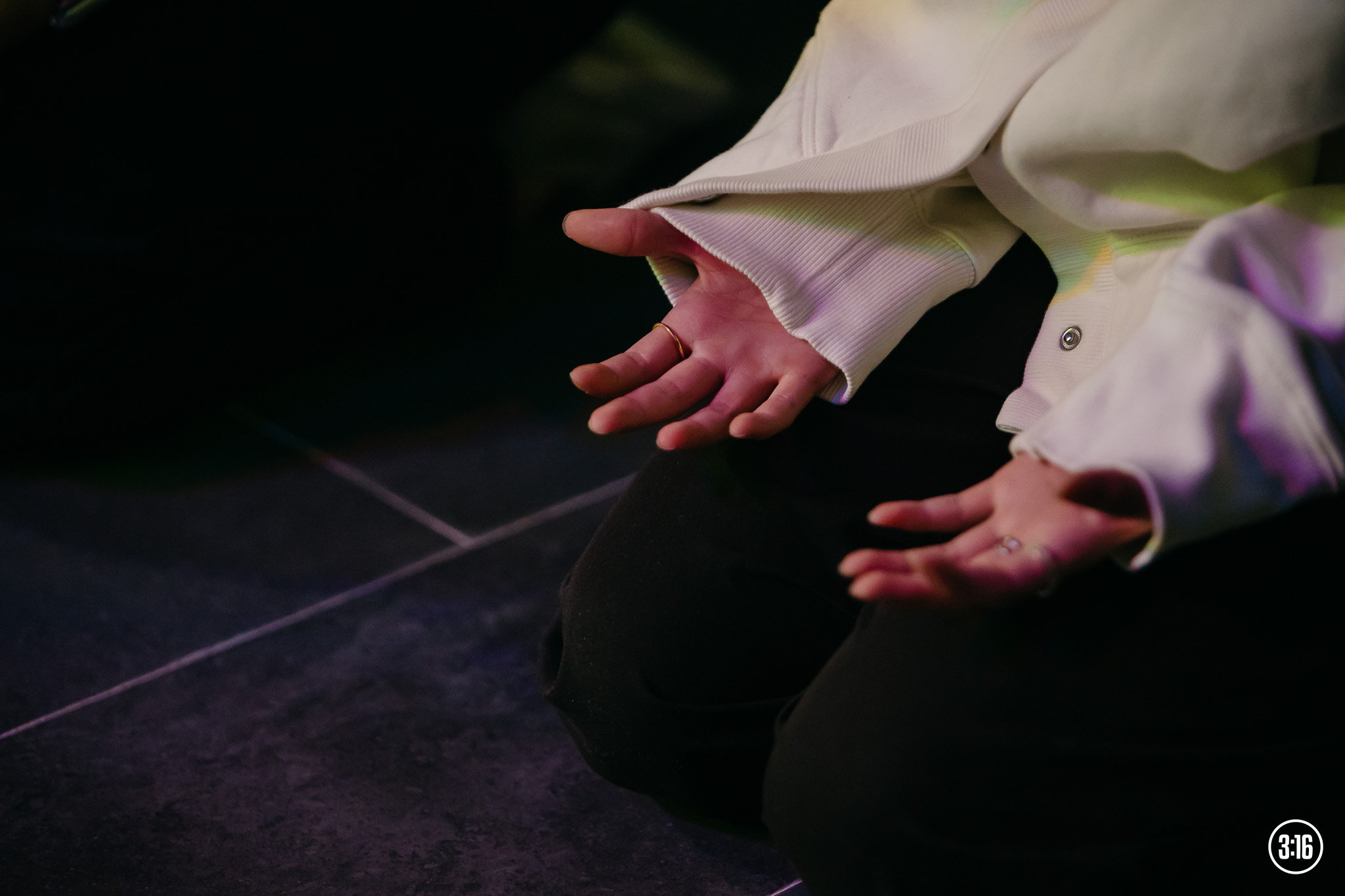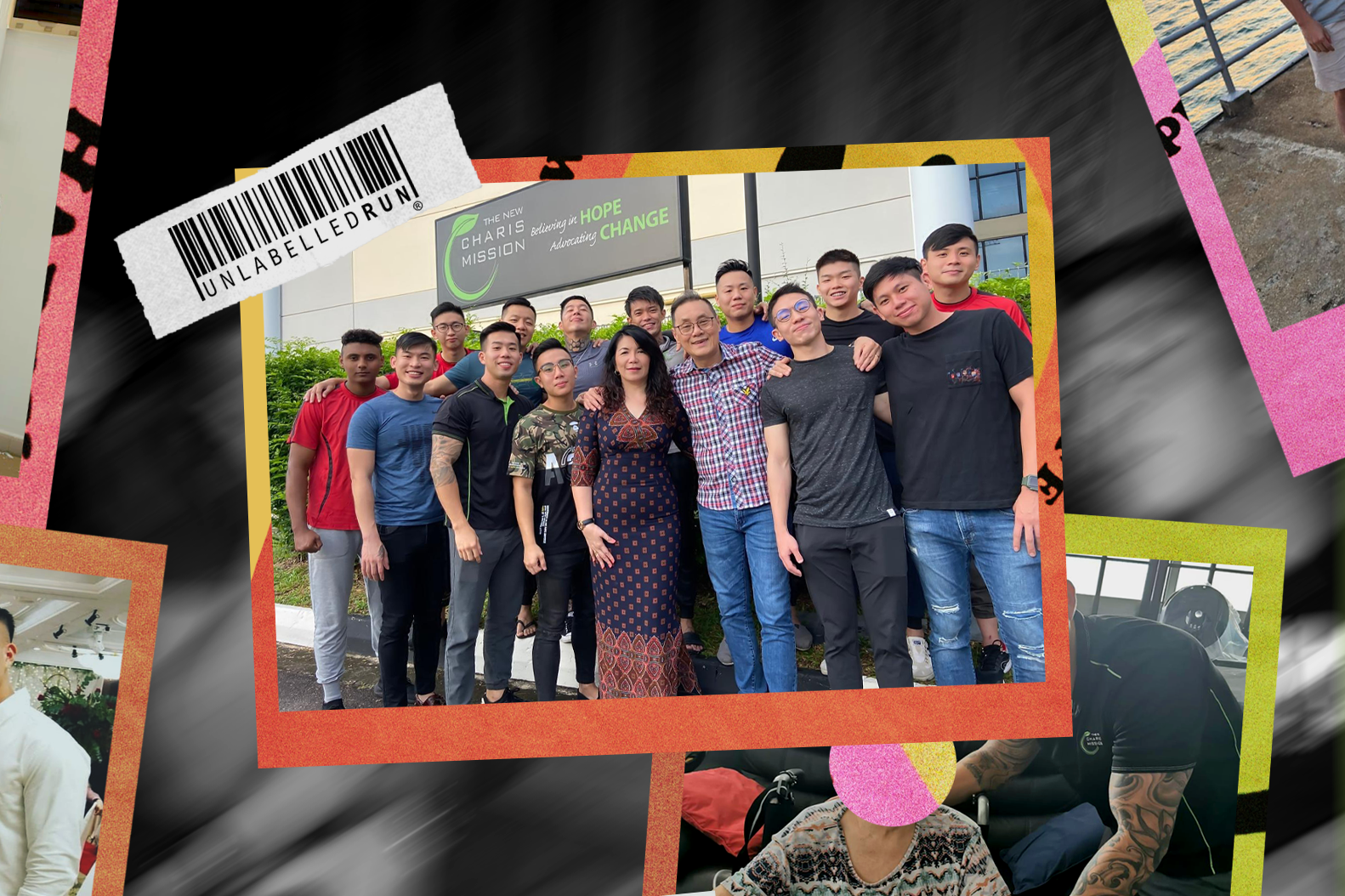Social inequality seems to be the buzzword on the silver screen this past year with successful satirical movies like Knives Out, Parasite, and Platform – the latest trending film I watched out of boredom during this circuit breaker period.
These movies got me thinking: It’s so easy to focus on our own needs – especially in this season where our survival instincts kicked in on high alert – but perhaps there are groups of people that have been overlooked.
So if you’re like me, wondering if there’s any help you can offer, here are 5 ground-up initiatives started by fellow Singaporeans that you can take into consideration.
1. ONE HOME @ A TIME
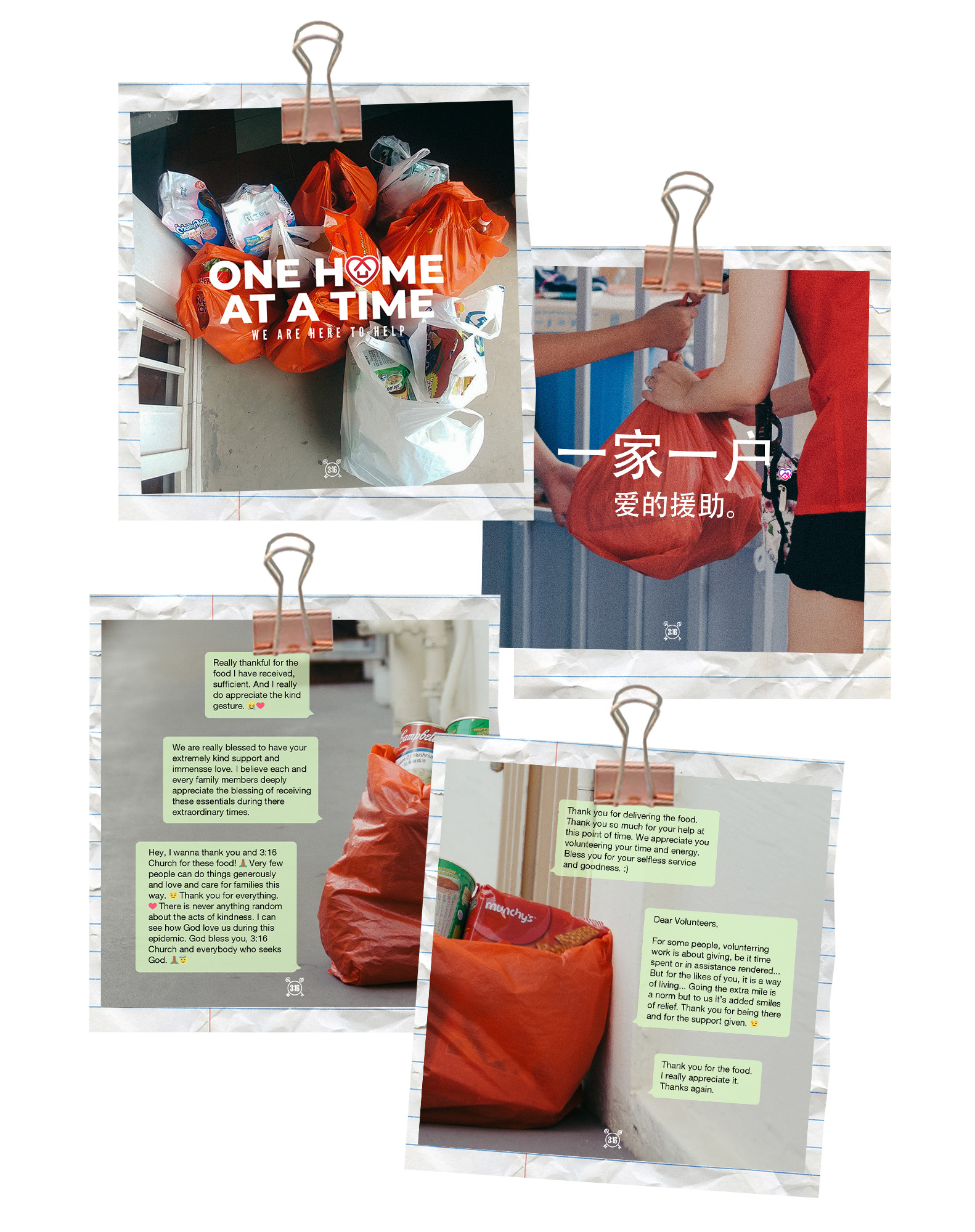 The idea behind One Home @ A Time started with a simple conversation.
The idea behind One Home @ A Time started with a simple conversation.
It was the day when Prime Minister Lee Hsien Loong announced the implementation of circuit breaker measures against COVID-19. The supermarkets were already jam-packed with panic-buyers even before the news broke and a friend was complaining to Debbie Ng, one of the founders of this initiative, that he had to drive to three different supermarkets just to find the stuff he needed.
That was when Debbie commented to her husband: “Actually, being able to travel to three supermarkets is already a luxury and privilege.”
Realising that there are groups of people who might be marginalised in this situation, the couple decided to flag up to their church leadership team to see if anyone would like to help purchase basic groceries like rice, eggs and canned food and deliver it to families in physical or financial difficulties.
In just four days, they met the needs of 20 families with the help of their friends. Beneficiaries include a wheelchair-bound tissue packet seller who lost his job, a jobless widow with three sick kids, a visually-impaired lady with an elderly mother and a sister with intellectual disability … and many more.
Most of these requests actually came through social services as a result of them having to close their volunteering arm due to the circuit breaker measures.
“Imagine the ripple effect: When the large social services cannot function, families get impacted. So we didn’t even know this space existed – we thought we’d just be reaching out to individuals.”
Before the circuit breaker period officially started, the team rushed to deliver the first batch of necessities. With the measures in place now, they had to re-strategise.
“Buying of groceries is still considered essential and allowed, but the difficulty comes in the delivery because of #StayHome.
“What we are doing now is to collaborate with taxi drivers, bus drivers and logistic companies who are already on the street. For every trip, we pay a certain amount,” Debbie explained.
This creates a win-win situation where they don’t just help the beneficiaries, but the people bridging the gap in between too.
“We won’t be able to help everybody but together, we can make a real difference one home at a time.”
Interested to chip in? Here are some ways you can help:
- Spread the word
- Give financially
- Purchase/order groceries
- Share relevant contacts (i.e. taxi drivers, logistic companies or even food suppliers or restaurants that have excess food to share).
To contribute, do contact Alisa at 9325 6634 or Debbie at 9847 3825.
2) PLAY@HOME
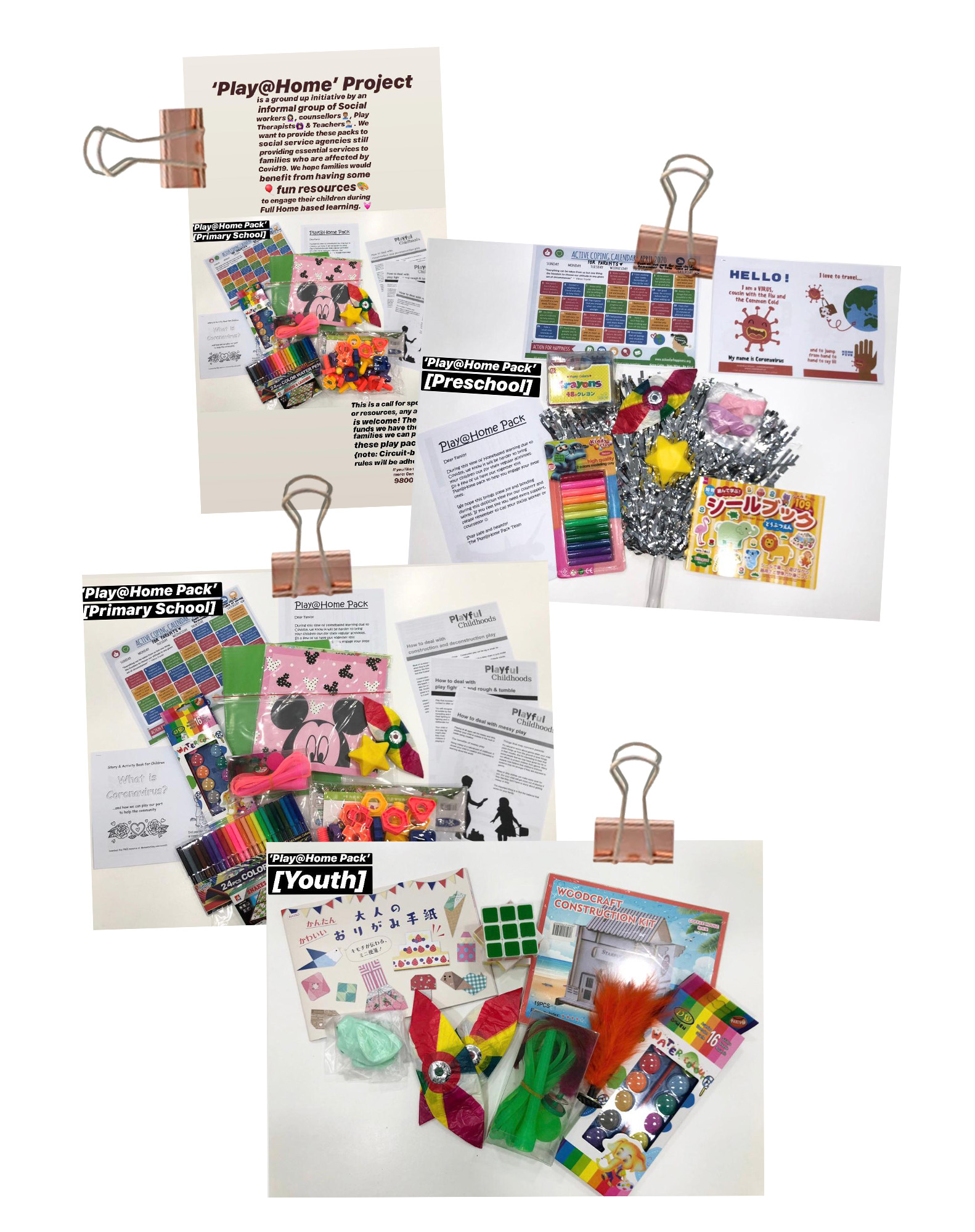
If grocery shopping is not your thing, how about buying toys?
When it was announced that schools would move to home-based learning, Grace Koh, a social worker working with children, understood how the circuit breaker measure would affect the underprivileged families.
Even though it may seem non-essential, the power of play and bonding cannot be overlooked, she told me.
“Play is a child’s way of coping with the changes and challenges they face, including COVID-19,” she shared.
“With home-based learning, parents with less access to resources can benefit from ideas on how to engage their kids. But in times like this, income is affected and it might be difficult to get hold of resources.”
This is especially so when buying toys could be at the expense of their next meal.
Grace connected with Deborah Ang, a social worker, and Nicolette Ng, a teacher, both who shared her passion for children and belief in the healing power of play and positive relationships.
That was how Project Play@Home was birthed.
The team is made up of social workers, counsellors, play therapists and teachers. Before the circuit breaker was implemented, they curated, sourced and packed 100 play packs for three different age groups: preschool, primary and youth.
The first batch of toys was funded by Write Edge Learning Centre, where Nicolette works at.
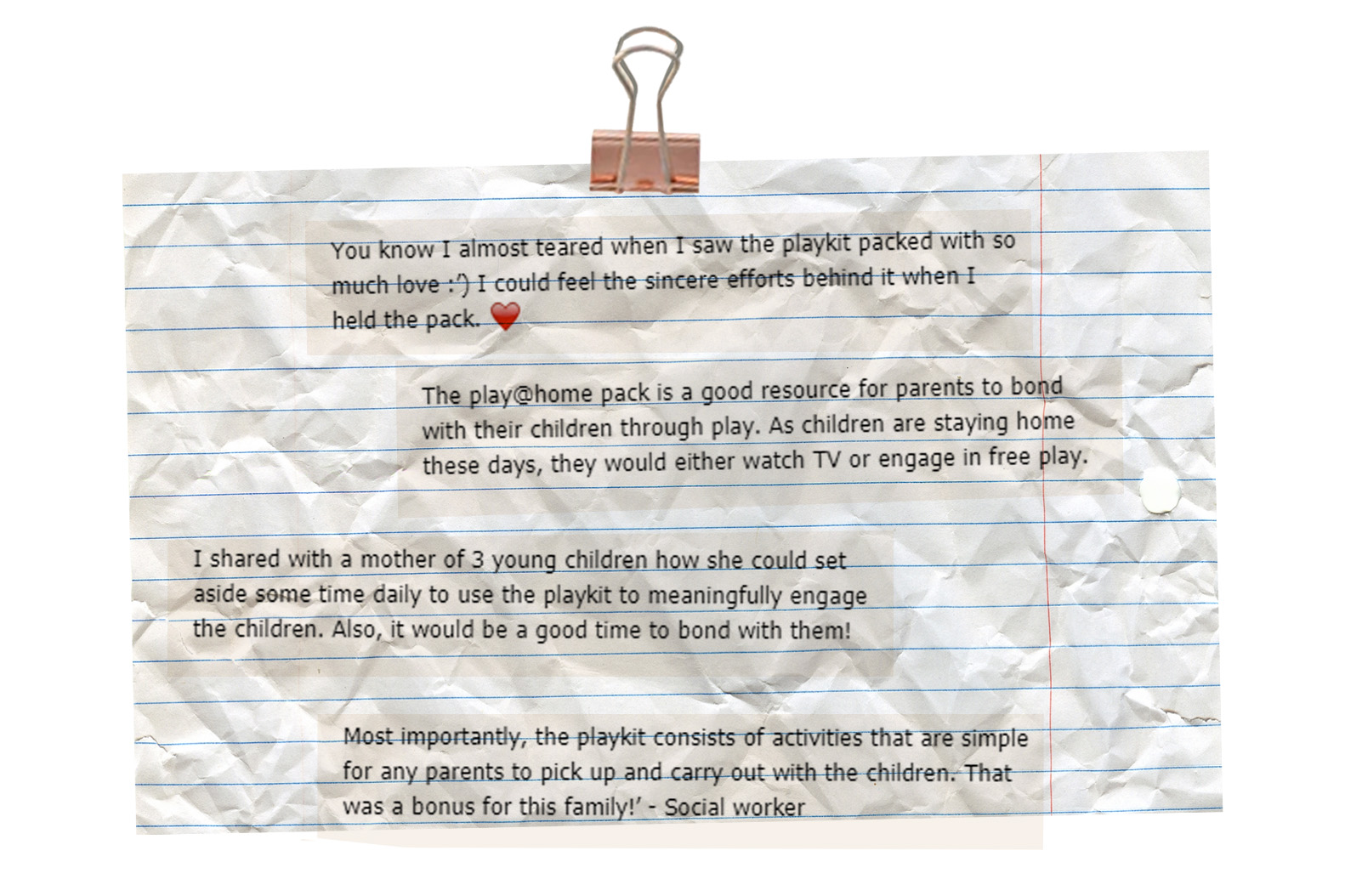
Within the first 2 days of school closures, the team was able to provide four social service agencies with these Play@Home packs to be given to families.
“The spirit of coming together to bless the kids is very inspiring,” Grace shared. “I posted a shoutout on my social media about this initiative and people started to contribute. I was surprised the responses came in quickly.”
“But the biggest blessing was hearing how families could play and have a break from all the stress, knowing that they can bond and have good memories.”
The team hopes to raise more funds to extend this initiative to more families who will benefit from it. If you believe in their cause, do contact Grace Koh at [email protected] to find out more.
3) HELPING MIGRANT WORKERS

Speaking of homes, we wouldn’t have a shelter over our heads if not for our migrant workers in the construction industry. Unfortunately, while they build beautiful houses for us, their living conditions in the dormitories are less than desirable.
Dormitory operators are only required to guarantee a minimum of 4.5 square metres of living space per worker. This means there can be up to 20 people living in a 90 square meter room.
And now that migrant workers are not allowed to move out and are bounded by law to be quarantined inside their living quarters, sanitary issues resulting from overcrowding are a cause for concern.
These concerns are also compounded with the lack of information in the workers’ native languages, and rising anxiety due to a surge in numbers of infected migrant workers.
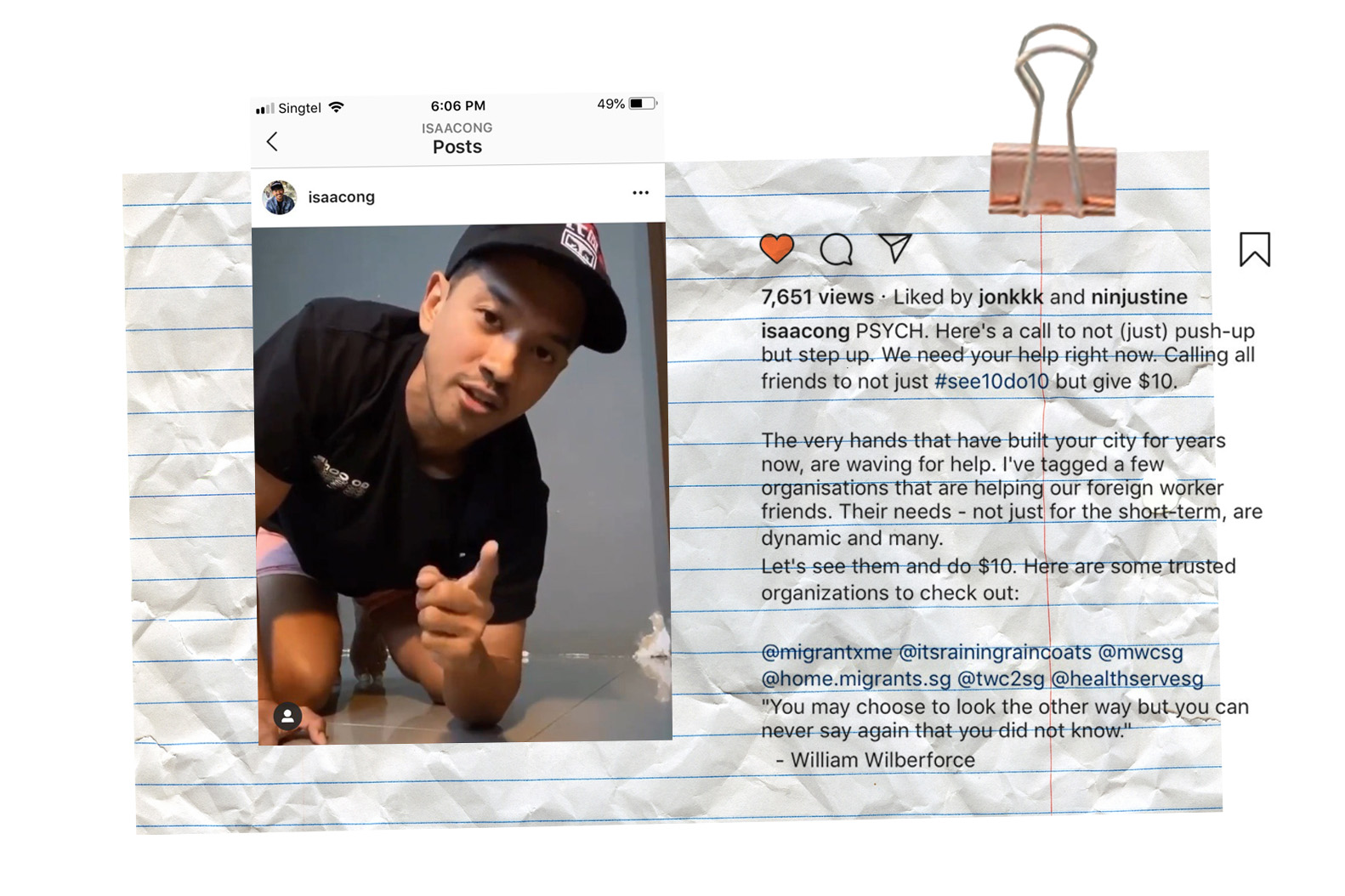
In a bid to help fundraising efforts for the migrant worker community, Isaac Ong did a spin on the #see10do10 challenge. Instead of posting a clip of doing 10 push-ups and then challenging your friends, Isaac posted a message on his Instagram account to encourage people to “not just #see10do10, but give $10”.
“I’ve tagged a few organisations that are helping our foreign worker friends,” he wrote. “Their needs – not just for the short-term – are dynamic and many. Let’s see them and give $10.”
Some of these organisations include MigranxMe, ItsRainingRaincoats, Healthserve and many more. If you’re interested to help the migrant worker community, here is a list of non-governmental organisations that are working with migrant workers on meeting their various needs.
4) BLESSING HEALTHCARE FRONTLINERS
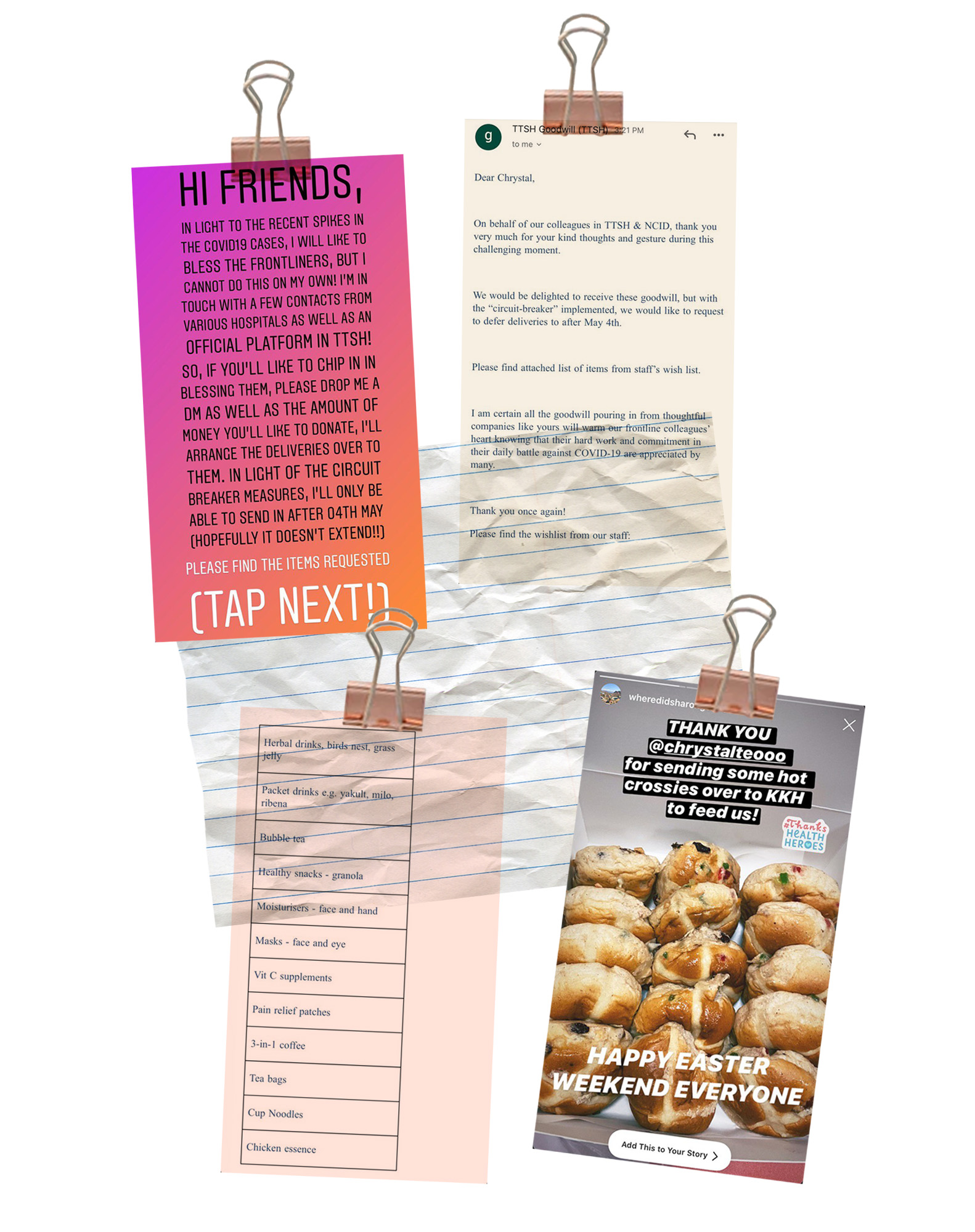
While Chrystal Teo understands that there are other emerging needs such as migrant workers and the elderly, her heart goes out to healthcare workers who high-strung in this season.
“It’s true that healthcare workers have their own income,” she pointed out. “But they do not have time to eat properly, especially now. When I talk to friends in the medical profession, I found out that their diet is unhealthy … eating fast food, cup noodles etcetera because of the lack of time.
“They barely have enough time to rest.”
Chrystal has been getting in touch with hospitals to find out how she can bless them. From the replies, she consolidated a wishlist filled in by medical staff themselves.
Due to limited finances, she has only managed to execute this at Singapore General Hospital and KK Women’s and Children’s Hospital thus far. The feedback was positive, noting that “food and drinks sent get gobbled down and finished really quickly”.
However, as the list of needs kept expanding, she eventually made the decision to do a call-out on her Instagram page and asked a few friends to help her share the message too.
“Those who have offered to give have given with a willing heart,” Chrystal said. “Some came up with ideas on where to find resources, searching for good promotion deals and sending them to me. One of my friends even ordered eye gel mask to test it out on her own so that we can prevent sending items that don’t work.”
“I have sent the care packs to my friends’ residential areas and they’ll help me bring it to the hospitals once the circuit breaker measures are lifted. I’m thankful that they are willing to help without complaints despite the inconveniences.”
As of now, the project is small but friends have been suggesting for her to bless people mending the quarantine facilities, ambulance workers and even the contact tracing teams that work day and night especially in the recent rise of unlinked cases.
If you’d like to join Chrystal in appreciating healthcare workers, here are some ways you can contribute:
- Donation of money: Accountability will be provided, or you can let her know if you have the exact items that you will like to contribute.
- For those who own businesses, you can sponsor any product.
If you’d like to contribute, you may contact Chrystal by filling up this form.
5) #HowCanIHelpSG
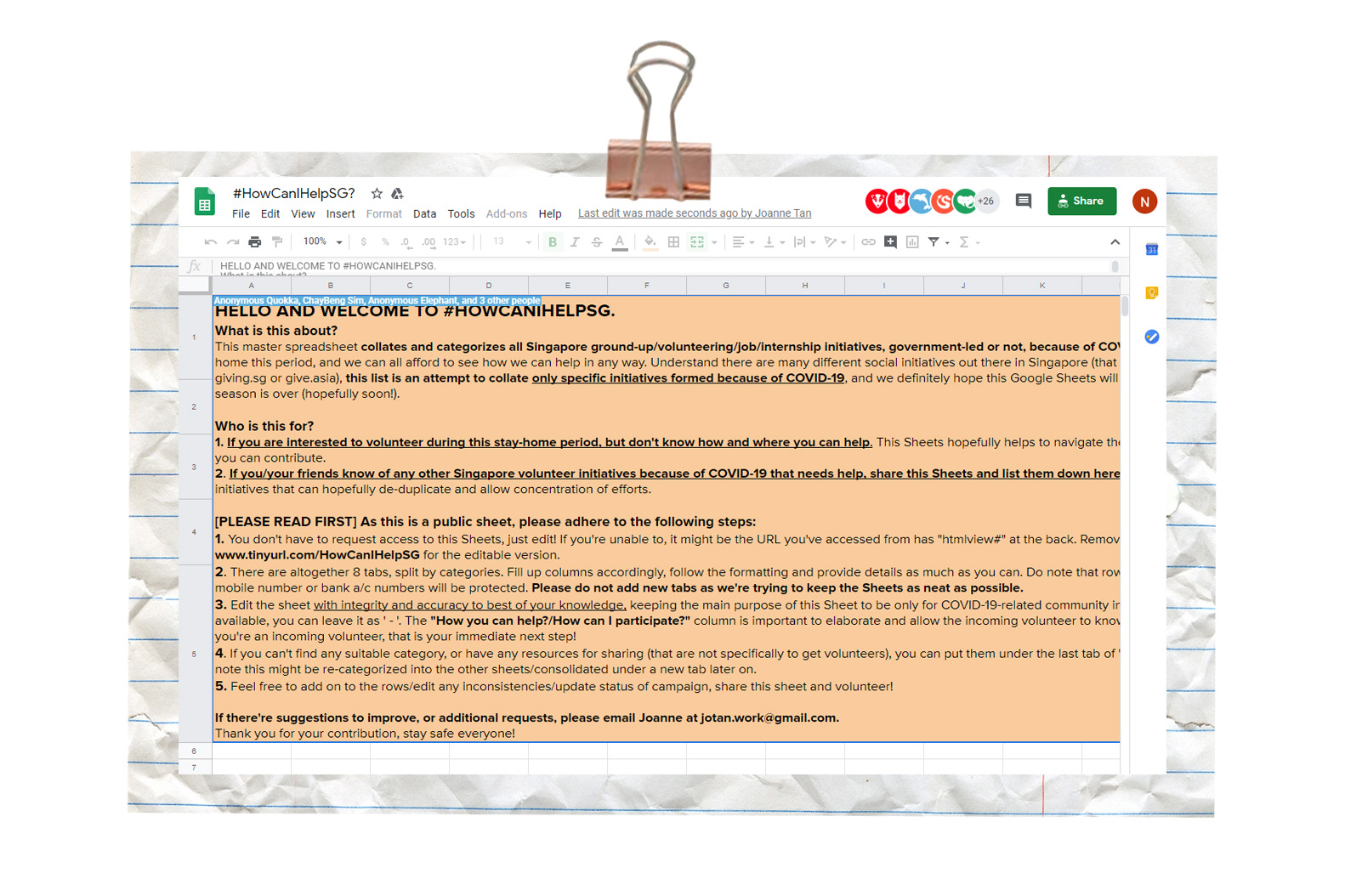 If none of the above caught your eye, then this master spreadsheet of all the ongoing initiatives formed specifically during and for this COVID-19 season will surely have something that will pique your interest.
If none of the above caught your eye, then this master spreadsheet of all the ongoing initiatives formed specifically during and for this COVID-19 season will surely have something that will pique your interest.
Started by Joanne Tan, she shared that the aim is to de-duplicate and consolidate all efforts.
“I’ve come across a few volunteer initiatives shared by friends – whether they are websites, Facebook/Instagram posts or stories – and thought there were many great initiatives out there to help during this period, from the comfort of our homes or online.
“I thought I could just my part by consolidating an online list for people who can use it as a directory to find out more about each initiative. There are actually many people in Singapore who want to help but they don’t know how they can help.”
Initially targeted at businesses affected by COVID-19, the list has grown to now include different categories such as educational resources, appreciation messages, shared resources and specific community groups. Anyone can edit the document to add initiatives.
“The church community around me has been actively involved in reaching out and helping out – from buying masks for the elderly in rental flats, to distributing snacks and tipping taxi drivers – and it’s very heartwarming to know there are so many who wants to contribute,” Joanne told me.
“But how can we still make a community impact even when we’re home physically? The power of crowdsourcing for this list reminded me about the power of a community when we come together to consolidate efforts and reach out.”
Here two ways you can help:
- Look through the causes to find out more on how you can contribute
- Add in any initiatives that are not on the list already
Seeing how people from all walks of life are coming together to give in ways that they can, I am reminded of a quote from Don Quixote: “The owner of wealth is not made happy by owning it, but by spending it – and not by spending it capriciously, but by knowing how to spend it well.”
So whatever resources we have, let’s choose to steward it wisely in this season!
- Which are the people groups that you feel most burdened for, and why?
- What are some of the ways that you can give?
- What is stopping you from meeting others’ needs in this season?
- What are some things you and your cell group can do together to bless others in this season?


